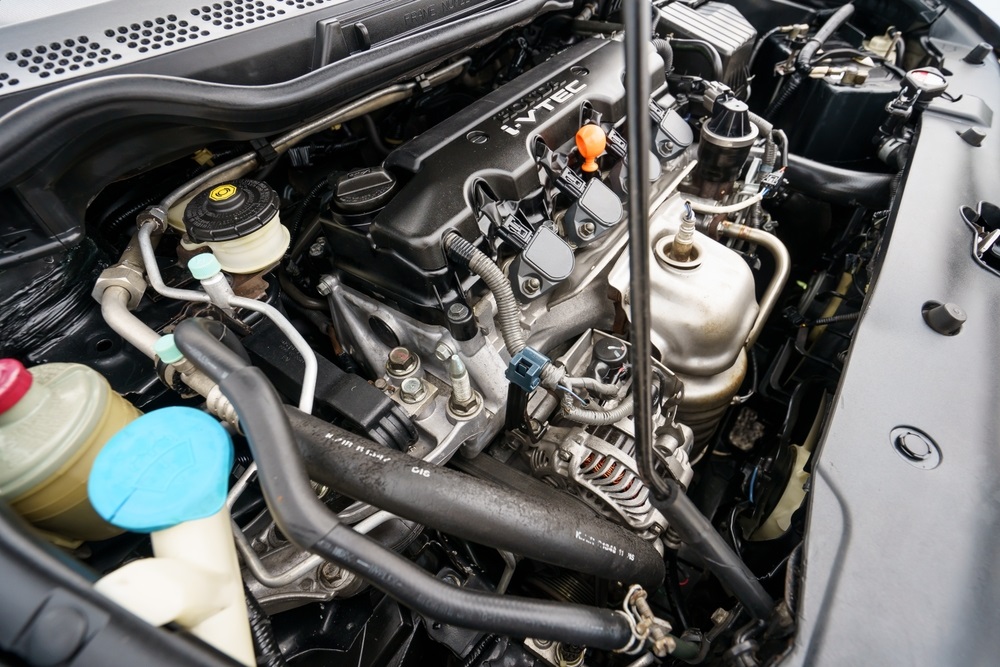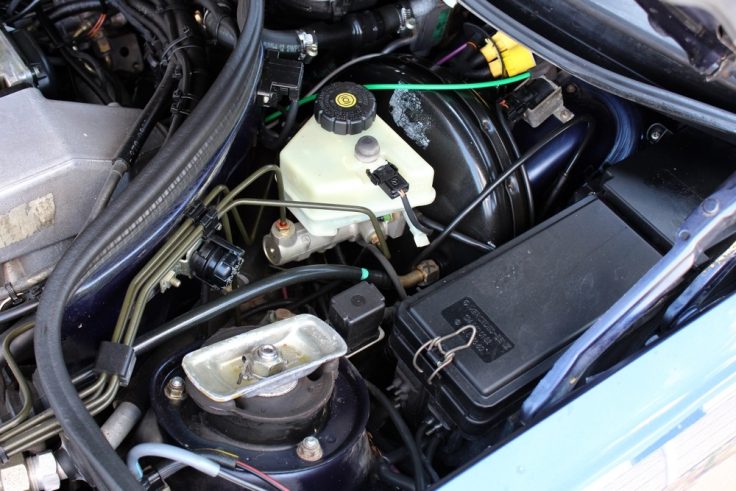If you’ve ever experienced a soft or unresponsive brake pedal, chances are there’s air trapped in your braking system. One of the most overlooked—but essential—maintenance steps is learning how to properly bench bleed a master cylinder before installing it. Doing so ensures that your brake system operates at peak performance from the get-go.
At EZ-Brakes, we specialize in fast, expert mobile brake services across the San Francisco Bay Area. In this guide, we’ll not only walk you through how to bench bleed a master cylinder kit, but we’ll also explain when it’s appropriate to bleed a master cylinder on car, and why leaving the job to professionals could save you time, money, and peace of mind.
What Is Bench Bleeding a Master Cylinder?
Bench bleeding is a pre-installation process where air is removed from inside a master cylinder by using a kit, typically performed on a workbench before it’s connected to your vehicle’s brake lines. The goal? Eliminate any trapped air that could compromise your braking system’s hydraulic integrity.
When air is present in your master cylinder, your brake pedal can feel spongy or may even go to the floor—two dangerous scenarios that signal incomplete hydraulic pressure. If you’re installing a new or rebuilt unit, learning how to bench bleed a master cylinder is non-negotiable.
What’s Included in a Bench Bleed a Master Cylinder Kit?
A standard bench bleed a master cylinder kit typically includes:
• Plastic or brass threaded fittings for the outlet ports
• Clear vinyl tubing
• Rubber stoppers or plugs
• Detailed instructions (if you’re lucky!)
These kits are designed to create a closed loop of brake fluid that allows you to push air out of the system while keeping new air from entering. You’ll need clean brake fluid and a way to depress the piston (typically a screwdriver or push rod).
Read More: Glazed Brakes
Why You Should Bench Bleed First—Not on the Car
Many DIYers wonder whether they can simply bleed a master cylinder on car after installation. While it’s technically possible, it’s much harder to detect and remove air from inside the cylinder once it’s already mounted and connected to brake lines.
Here’s why bench bleeding is preferred:
• Complete Air Removal: You can monitor fluid and bubble movement with more control.
• No Line Interference: Brake lines aren’t yet attached, which simplifies the process.
• Saves Time Later: A properly bled cylinder makes full brake bleeding easier and quicker.

Tools and Supplies You’ll Need
Before you start, make sure you have the right tools on hand. Cleanliness and precision matter here.
• Bench bleed a master cylinder kit (compatible with your unit)
• Fresh brake fluid (DOT 3 or 4—check your owner’s manual)
• Bench vise or a stable clamping system
• Screwdriver or brake piston tool
• Shop towels and gloves
• Safety glasses
Using clean, uncontaminated brake fluid is critical. Old or moisture-saturated fluid can degrade your entire braking system over time.
Step-by-Step: How to Bench Bleed a Master Cylinder
Here’s a full walkthrough on how to bench bleed your master cylinder with precision. This process usually takes about 30–45 minutes.
Step 1: Secure the Master Cylinder
Mount the unit in a vise or stable clamp using the flange—not the body. The cylinder must stay level to prevent air from being trapped in any chamber.
Step 2: Install the Bleeding Kit
Thread the fittings into the outlet ports. Attach the tubing, making sure both ends feed back into the reservoir. The tubes must be submerged in brake fluid at all times to prevent air re-entry.
Step 3: Add Brake Fluid
Fill the master cylinder reservoir with brake fluid. Watch the fluid level throughout the process and top off as needed to prevent introducing new air.
Step 4: Purge the Air
Use a screwdriver or similar tool to slowly depress the piston. Push it in about ¾ inch and release slowly. You’ll see air bubbles escaping through the tubing. Repeat this 15–20 times until no more bubbles appear.
Step 5: Seal It Up
Once you’re confident that the master cylinder is air-free and the piston movement feels firm, remove the bleeding kit and cap the ports or connect the brake lines immediately. Delays can allow air back into the system.
When to Bleed a Master Cylinder On Car
Sometimes, bench bleeding isn’t feasible. Maybe the master cylinder has already been installed. In this case, you may need to bleed a master cylinder on car.
This method involves:
• Opening bleeder screws on the brake lines
• Using a helper to depress the pedal while you monitor fluid flow
• Pumping and releasing repeatedly until only fluid (no bubbles) exits
While this method works, it’s not ideal. Air can become trapped in smaller internal chambers that pedal pumping alone may not reach. That’s why bench bleeding remains the gold standard.
Common Mistakes to Avoid
Bench bleeding might sound simple, but several missteps can compromise your work.
Mistake 1: Not Using a Proper Kit
Trying to bleed the system without a bench bleed a master cylinder kit invites leaks, inconsistent results, and wasted time.
Mistake 2: Letting the Tubes Come Out of Fluid
Always ensure the tubes stay submerged in fluid. If they’re exposed to air at any point, the entire process needs to be restarted.
Mistake 3: Rushing the Piston Strokes
Depressing the piston too quickly stirs the fluid and introduces more air, setting you back.
Why EZ-Brakes Is the Smart Choice
At EZ-Brakes, we know that precision and convenience matter. That’s why we offer mobile brake repair and replacement services that include bench bleeding a master cylinder—right in your driveway.
Our Customers Love Us Because We Offer:
- Expert mobile service: No need to visit a shop
- Certified technicians: Each with years of hands-on experience
- OEM-grade parts and brake fluid
- Same-day availability in most Bay Area locations
- Upfront pricing: No upsells, no surprises
Whether you’re replacing a worn-out cylinder or upgrading to a performance brake system, we ensure it’s properly bled and professionally installed. Plus, we handle full brake bleeding system-wide after installation.
What Happens if You don’t Bleed the Master Cylinder?
Failing to bleed the master cylinder introduces air into your brake system, which directly compromises its hydraulic integrity. Since brake systems rely on fluid to transfer pressure from the pedal to the brake calipers or drums, any trapped air creates compressibility—resulting in a soft or spongy pedal. You may notice inconsistent braking, delayed stopping, or the need to pump the pedal just to build pressure. These are all signs that the system isn’t operating at full capacity.
More seriously, neglecting this step can pose a real safety hazard. Your vehicle may not stop as expected during sudden braking situations, which increases your risk on the road. Additionally, an unbled master cylinder can lead to uneven brake pad wear, erratic ABS performance, and even internal damage over time. Bleeding the system properly ensures consistent brake pressure, reliable response, and peace of mind every time you drive.
Read More: 5 Signs Your Service Brake Needs Immediate Attention
FAQs About Master Cylinder Bleeding
HOW LONG DOES IT TAKE TO BENCH BLEED A MASTER CYLINDER?
Typically, it takes 30–45 minutes. Our techs at EZ-Brakes can do it faster with our professional kits and experience.
IS IT NECESSARY TO BLEED A MASTER CYLINDER ON CAR IF I BENCH BLED IT?
In most cases, no. If the bench bleed was done correctly and no air entered during installation, further bleeding may only be needed at the calipers.
HOW CAN I TELL IF THERE'S STILL AIR IN THE SYSTEM?
If your brake pedal feels soft or inconsistent, air may still be trapped. In this case, bleed the brakes starting from the wheel farthest from the master cylinder.
CAN I USE A BENCH BLEED A MASTER CYLINDER KIT MORE THAN ONCE?
Yes, most kits are reusable. Just clean them thoroughly after each use to avoid contamination.
CAN EZ-BRAKES BLEED A MASTER CYLINDER ON CAR?
Absolutely. If you’re unable to bench bleed or prefer to leave it to pros, we can safely bleed your system on-site.
Conclusion: Brake Safety Starts at the Master Cylinder
Learning how to bench bleed a master cylinder isn’t just a technical skill—it’s a safety measure that every vehicle owner should take seriously. Whether you use a bench bleed a master cylinder kit yourself or decide to bleed a master cylinder on car after installation, the key is eliminating every bit of trapped air.
Not sure if you’ve done it right? Let EZ-Brakes take it from here.
With our mobile service, top-tier expertise, and genuine care for your safety, we make brake service fast, easy, and flawless.
Book your mobile brake service today at EZ-Brakes.com or call us directly at to speak with a brake expert. Your safety is one appointment away.



